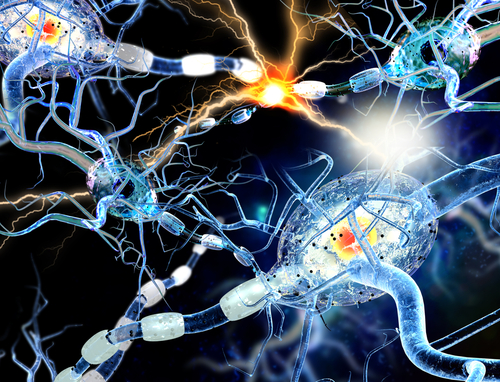Nerve Response Tests May Drive Therapies Given to People with Milder Disease, Study Suggests
Written by |

Patients with mild myasthenia gravis (MG) but with poorer nerve cell response in initial diagnostic tests are more likely to progress to more aggressive therapy regimens than those with better nerve responses, known as decrement scores.
The study “Baseline Decrement in Patients with Mild Myasthenia Gravis Predicts Immunomodulation Treatment” published in the Canadian Journal of Neurological Sciences.
Doctors commonly assess the ability of nerve cells to conduct and transmit the electrical pulses needed to stimulate muscle cells (called an electrophysiological test) in people with myasthenia gravis. This is often first performed as a diagnostic approach, either through single fiber electromyography (SFEMG) or repetitive nerve stimulation (RNS).
Poor neuromuscular transmissions at the nerve-muscle junction are a characteristic disease manifestation. So, electrophysiological evaluations extend beyond diagnosis, being also used to assess disease severity, predict the risk of flares, and evaluate responsiveness to therapy. “Decrement reflects neuromuscular transmission failure at the neuromuscular junction,” the researchers wrote.
An international research team explored the extent to which electrophysiological abnormalities could impact treatment regimens given to myasthenia gravis patients.
They reviewed the clinical records of 87 people, suspected to have myasthenia gravis and referred to the Prosserman Family Neuromuscular clinic at the University Health Network in Toronto, Canada, between June 2012 and December 2015. Diagnosis was made based on abnormal SFEMG findings assessed by a neuromuscular expert.
These patients were followed for a mean period of 2.6 years, and they were prescribed common treatments for myasthenia gravis, which included Mestinon (pyridostigmine), prednisone, azathioprine, CellCept (mycophenolate), intravenous immunoglobulins (IVIG), and plasma exchange (plasmapheresis).
Patients who, at a first visit, showed greater fluctuations in the electric signal at the neuromuscular junction and lower electrical signals (reduced by 20% or more) were more frequently positive for autoantibodies and had generalized disease. These people were also classified as having more severe disease, having higher quantitative (above 10.5) myasthenia gravis score (QMGS) at baseline, compared to patients with better electrophysiological test results.
This group of patients was also more commonly treated with more severe treatment regimens like IVIG and plasmapheresis.
The team found that patients who had mild disease (QMGS below 10.5) and high electrical signal decrement values (of 10% or above) at an initial evaluation were 6.7- and 21.5-times more likely to be treated with IVIG and plasmapheresis. In contrast, higher electrical signal fluctuations were associated with CellCept treatment.
“Patients with mild disease and high decrement might benefit from more counselling regarding identifying and managing increasing symptoms earlier, and perhaps more frequent follow up to detect clinical deterioration,” the researchers wrote.
Supported by these findings, the team believed that electrophysiological decrement at an initial evaluation may be a useful in assessing people with myasthenia gravis and predict their long-term outcomes. But additional research in larger patient groups is necessary, the researchers added.






Joe OBrien
I go to JFK Neurology dept and I wish Dr Miller knew this. I wish youd send something to them.